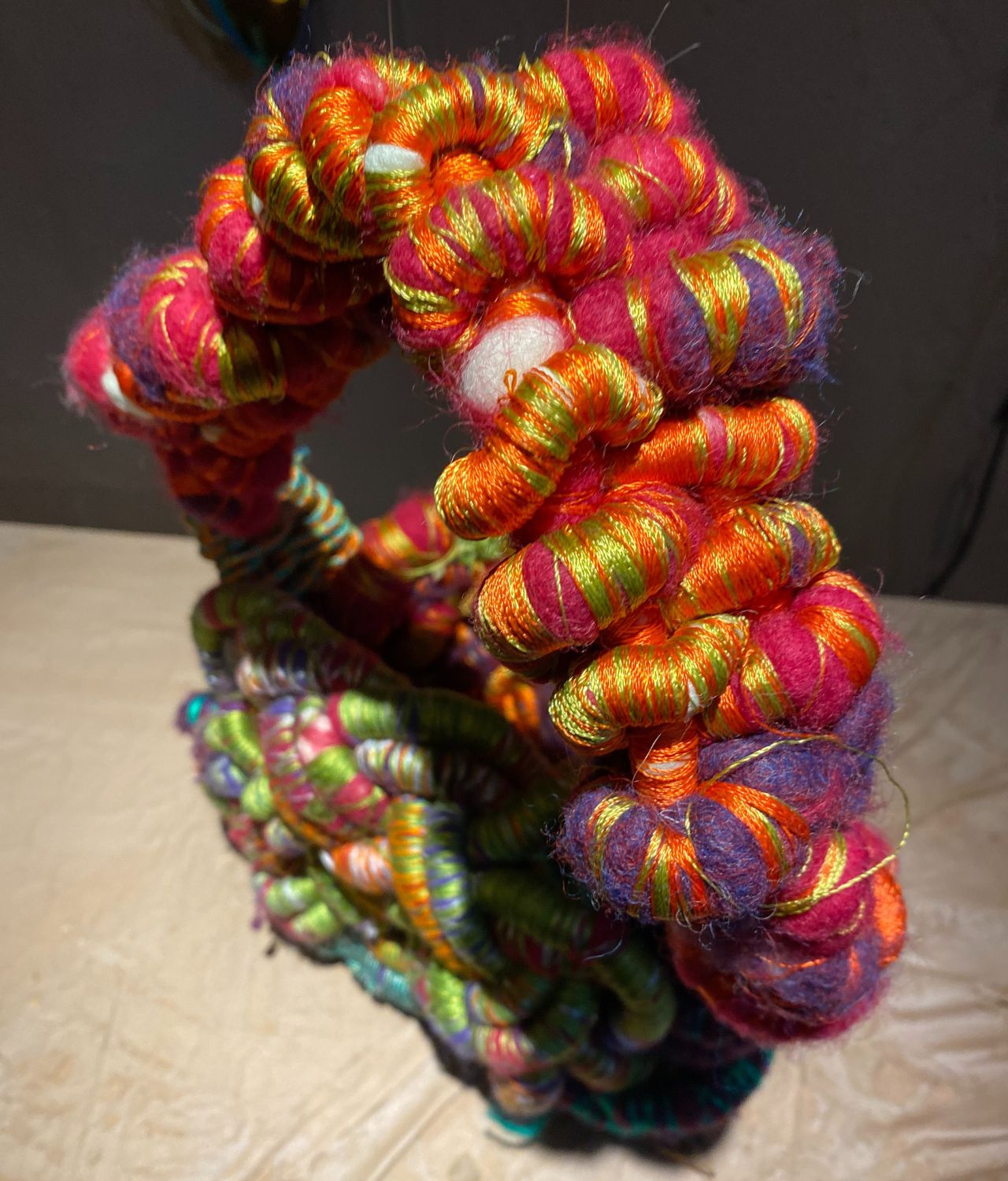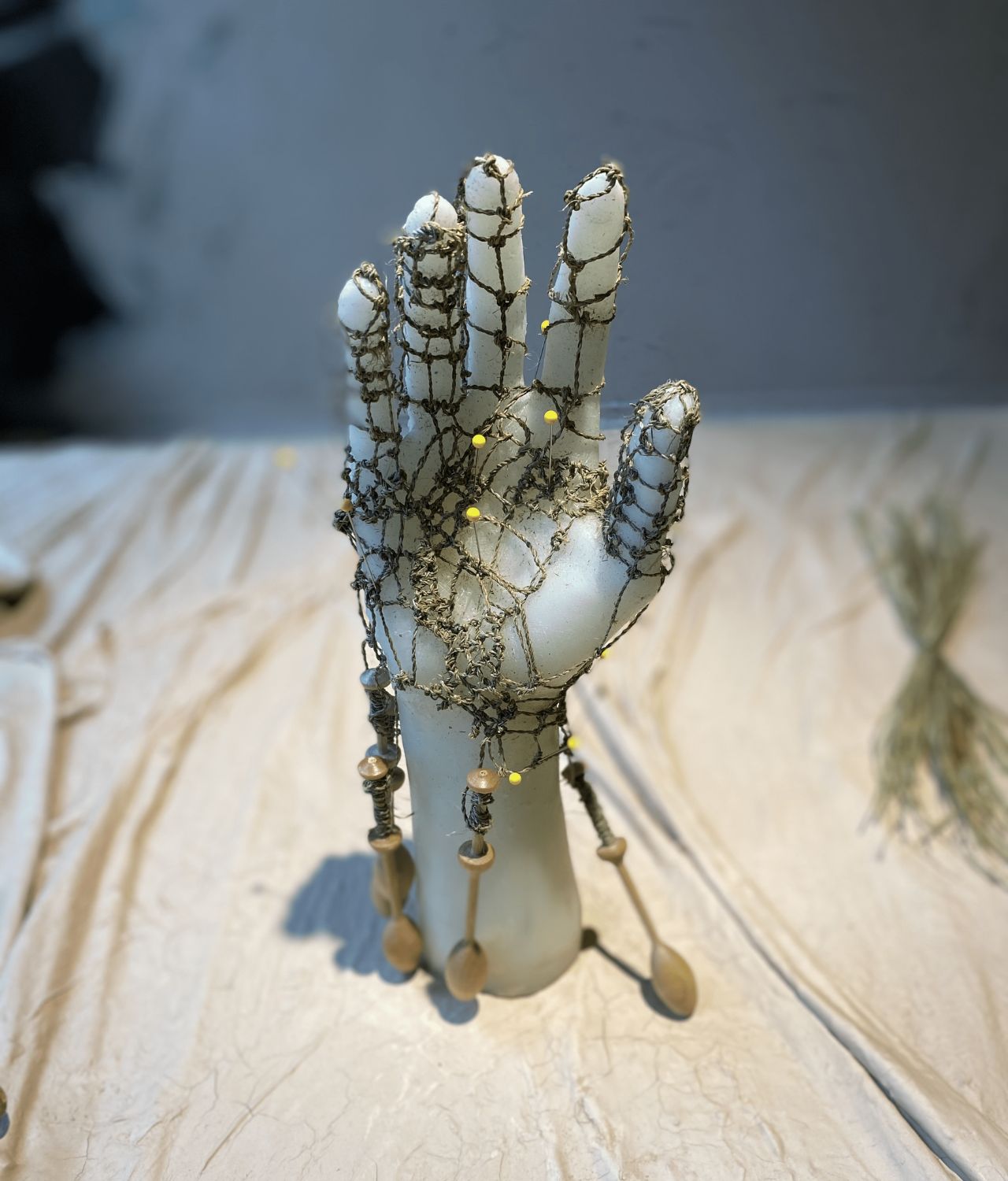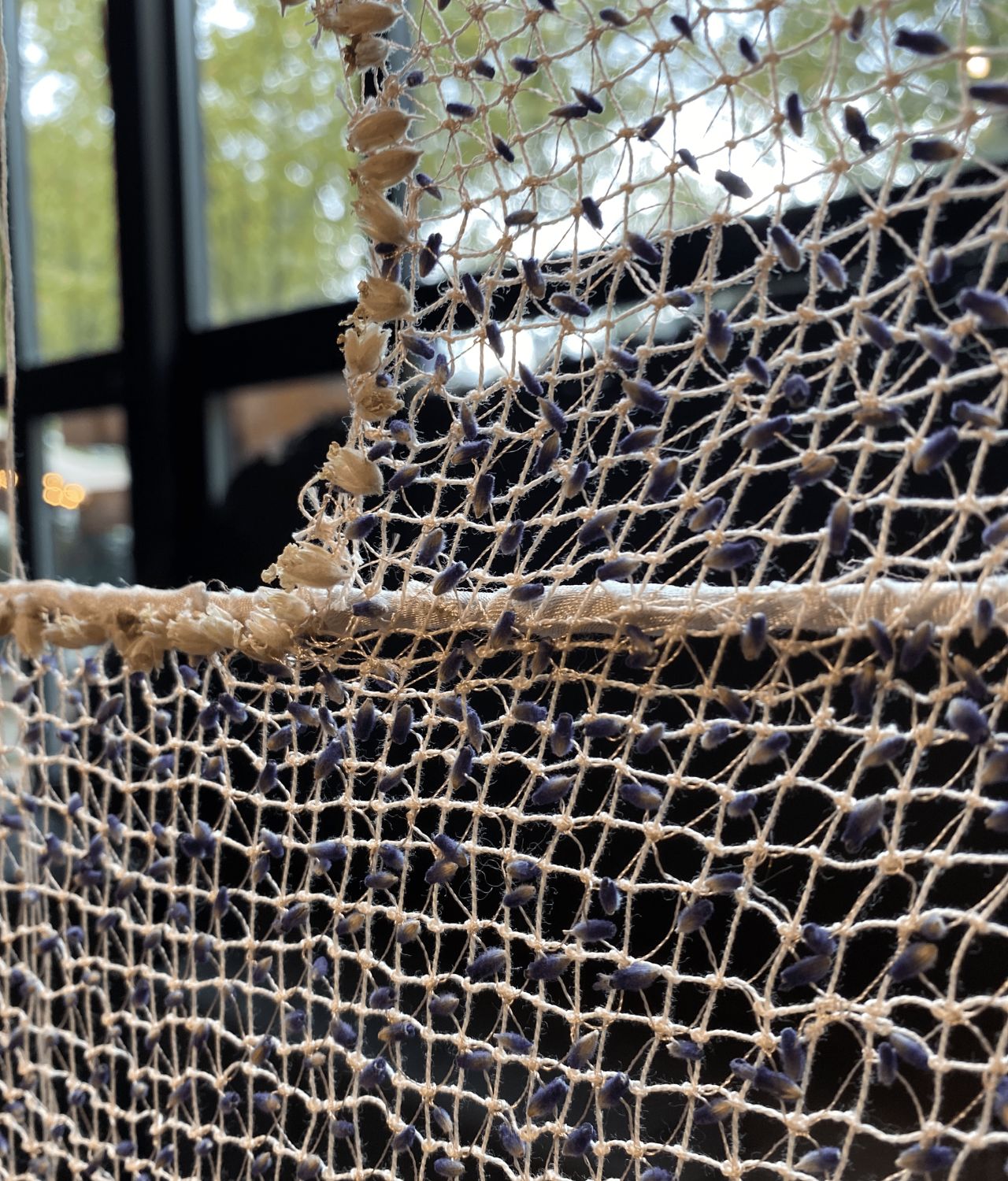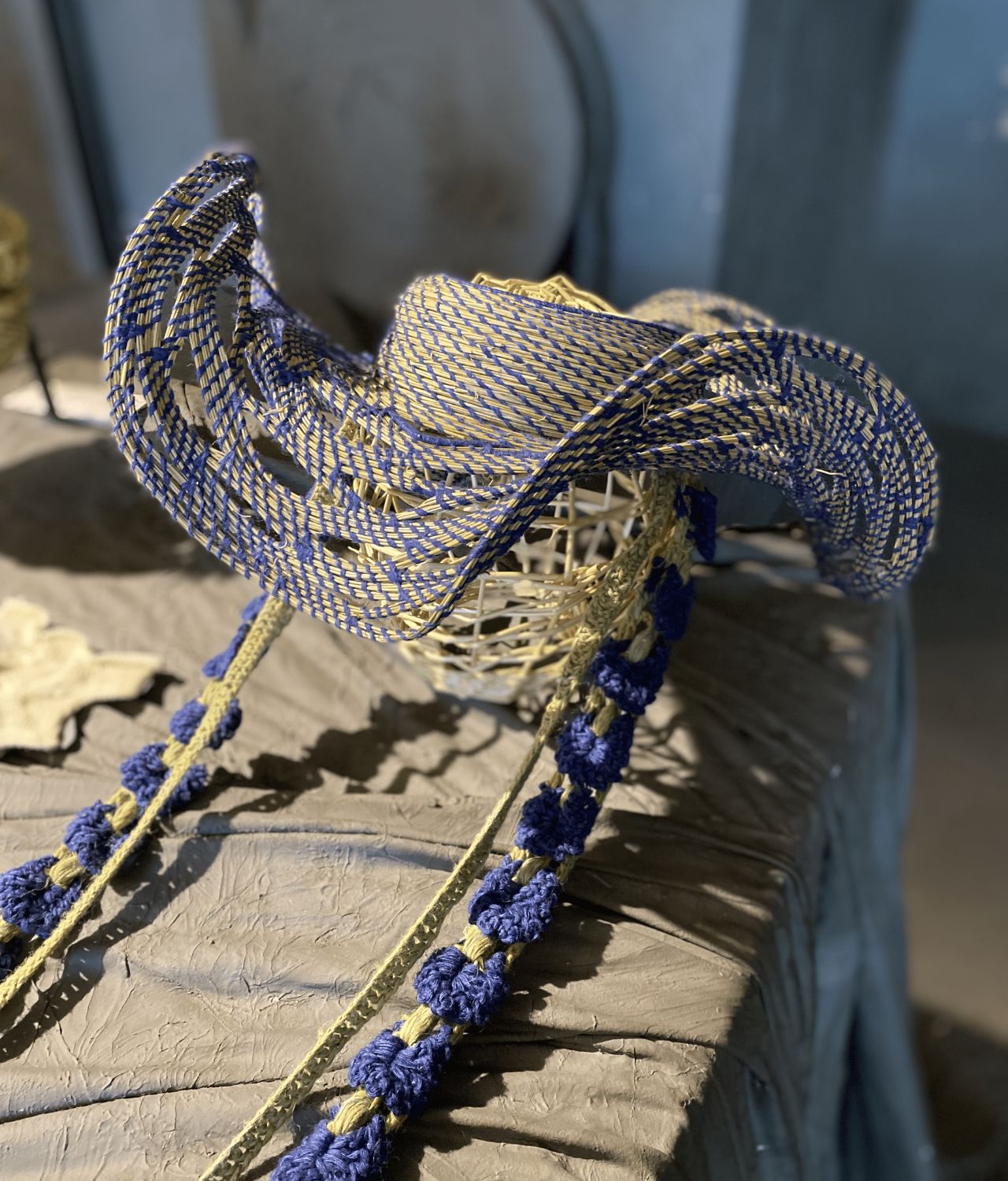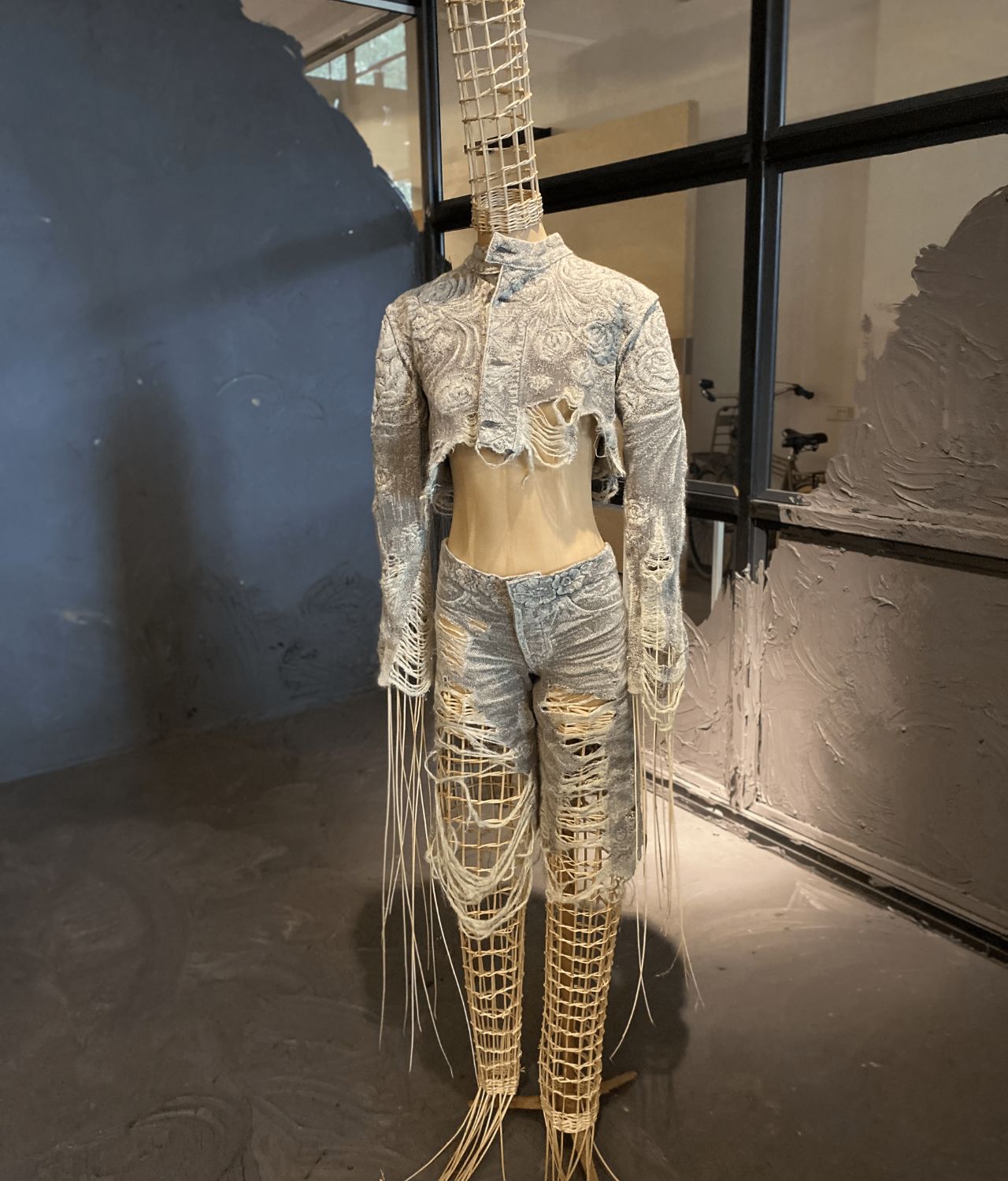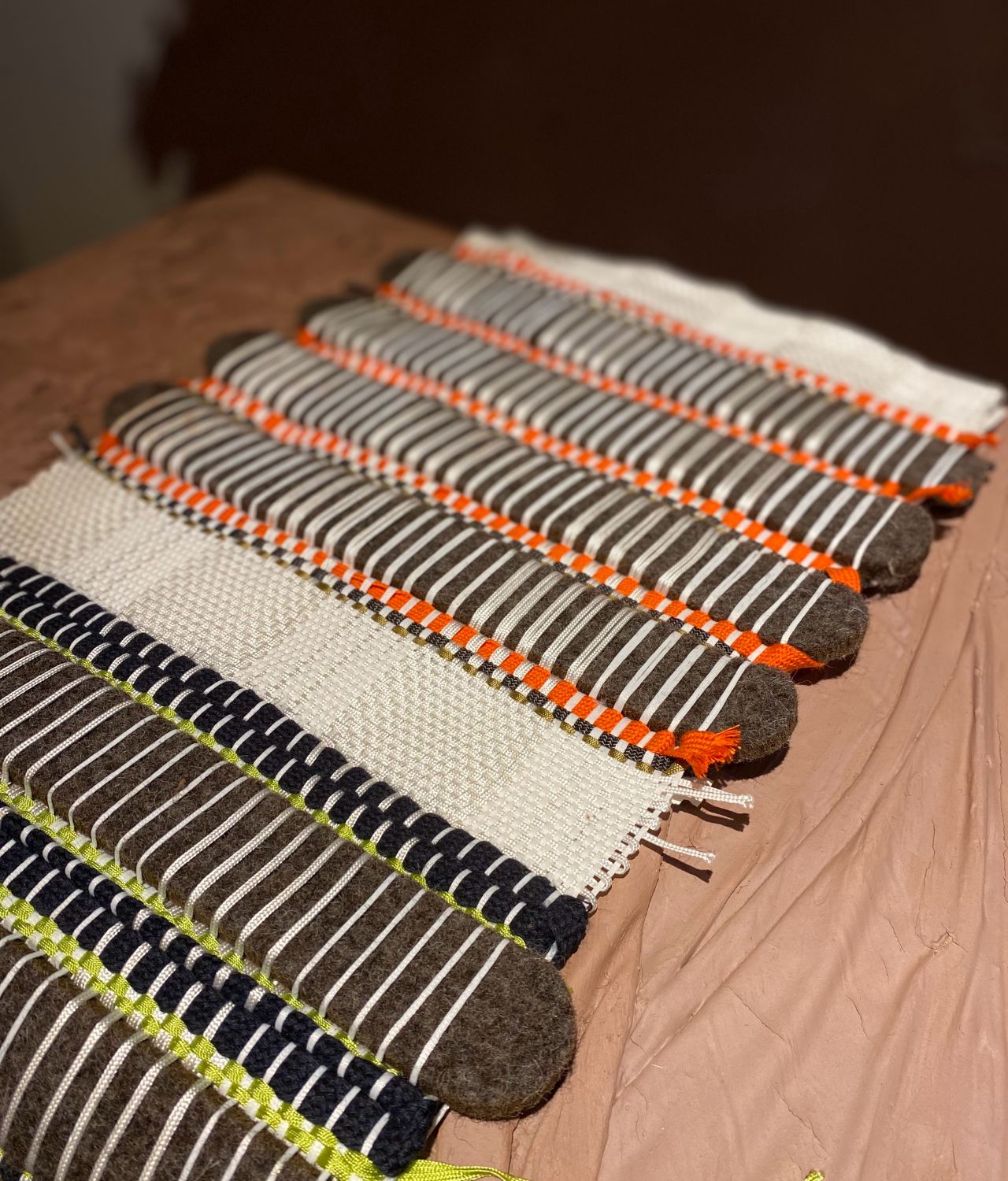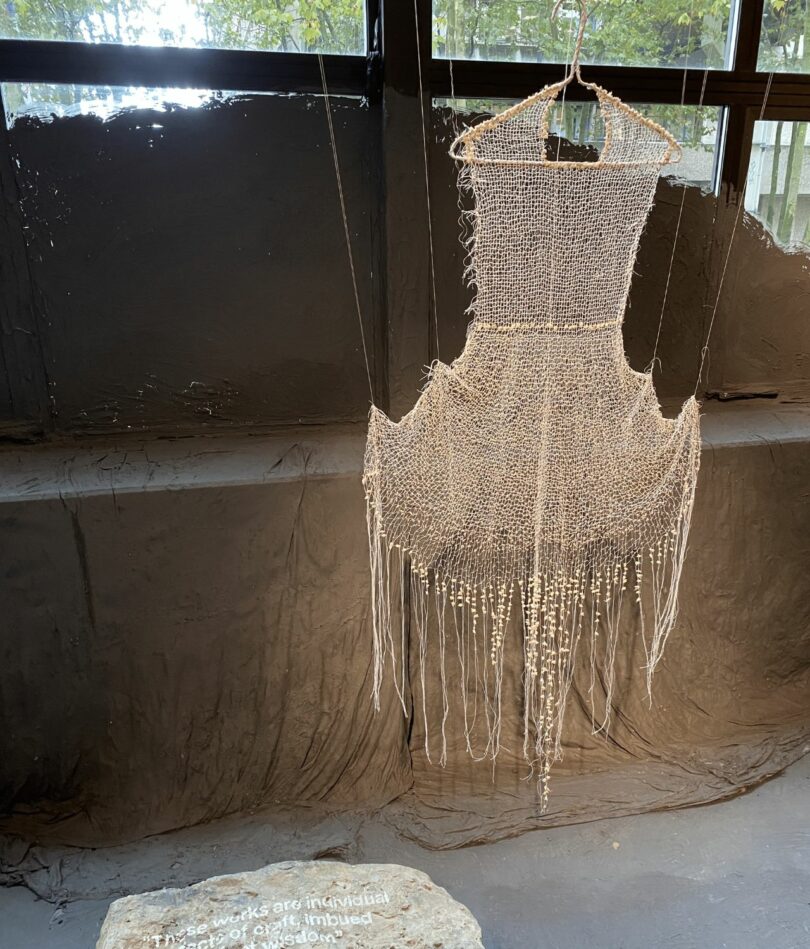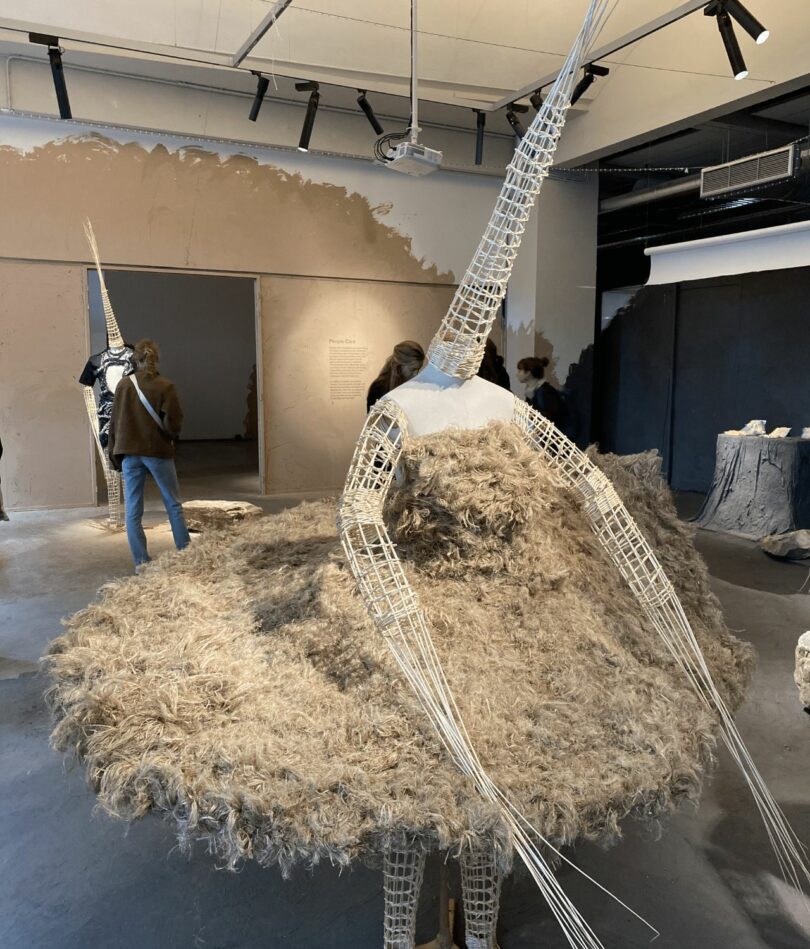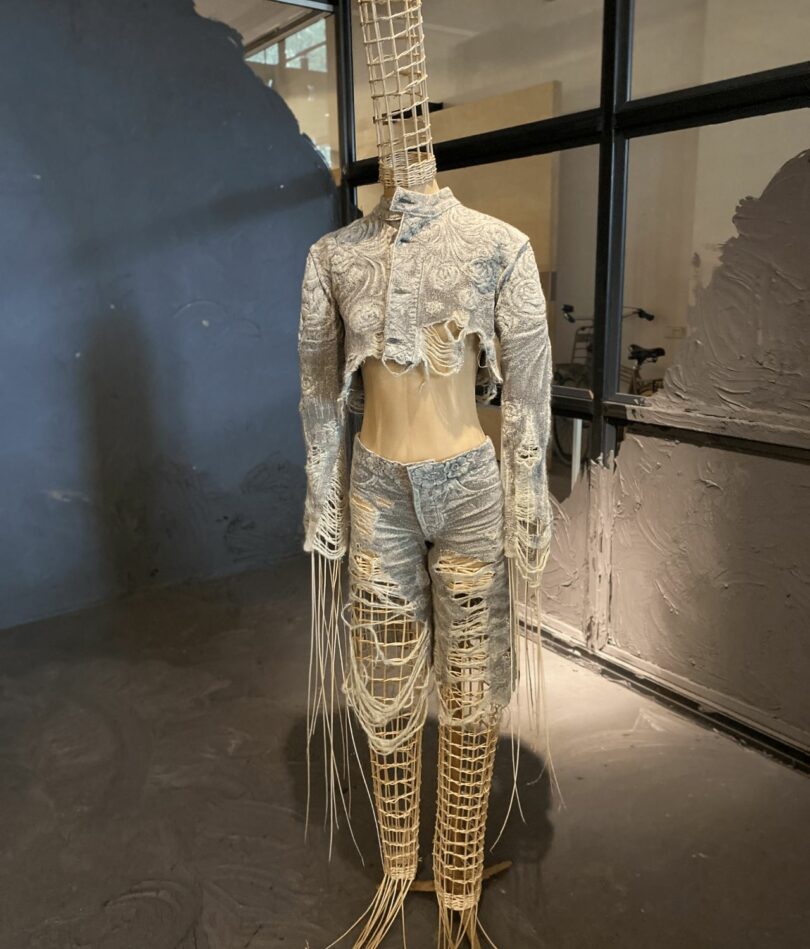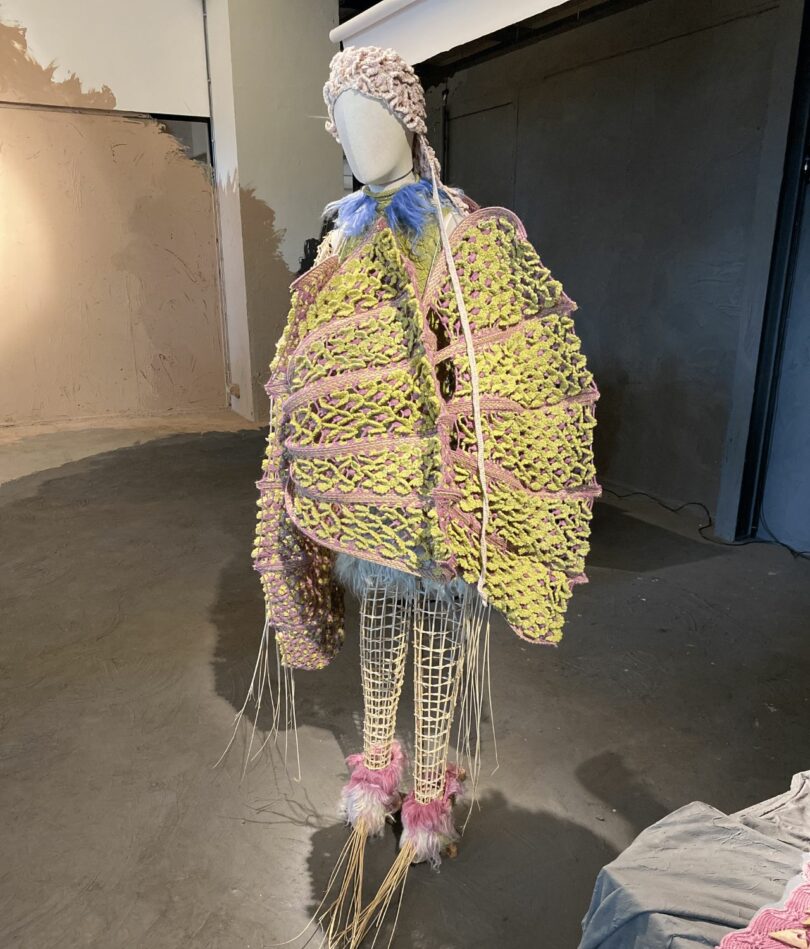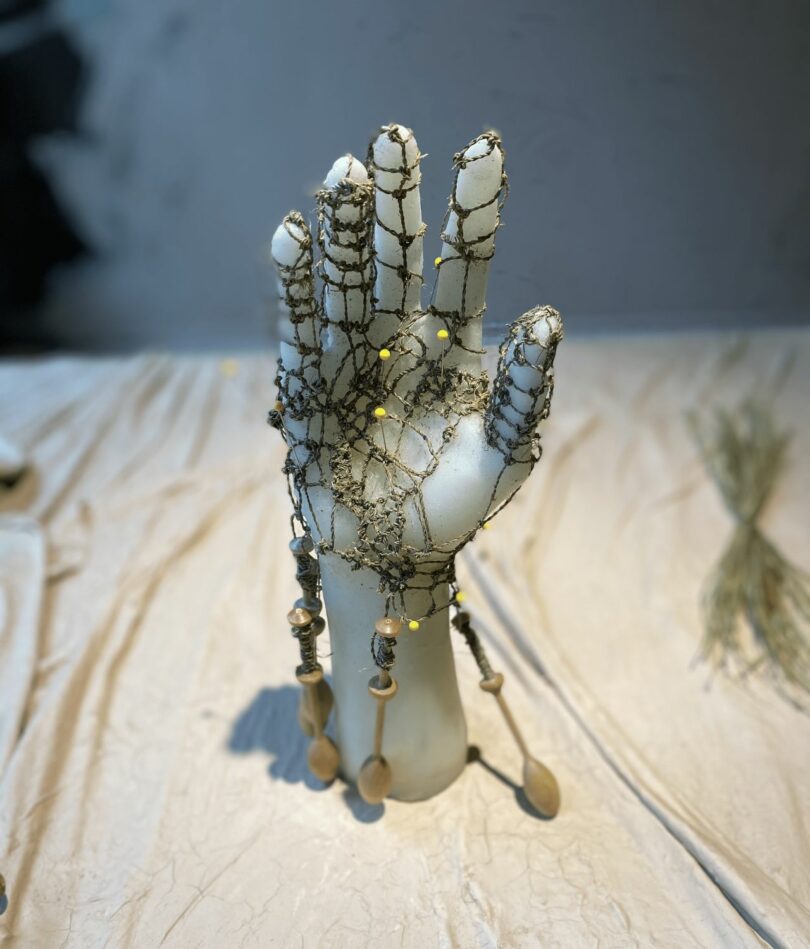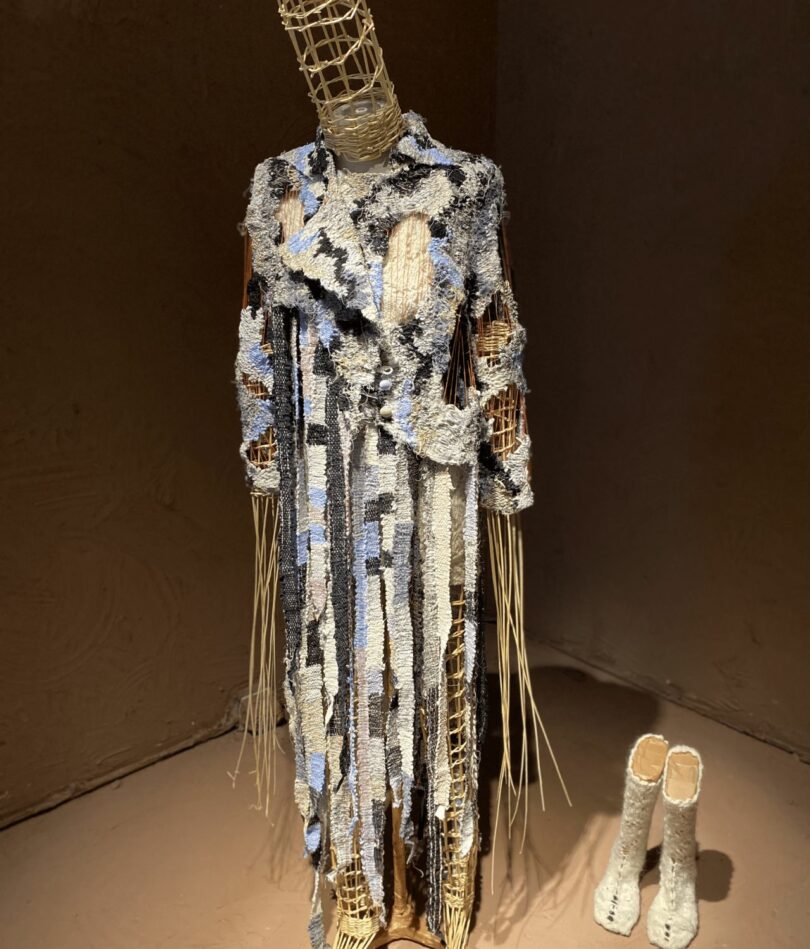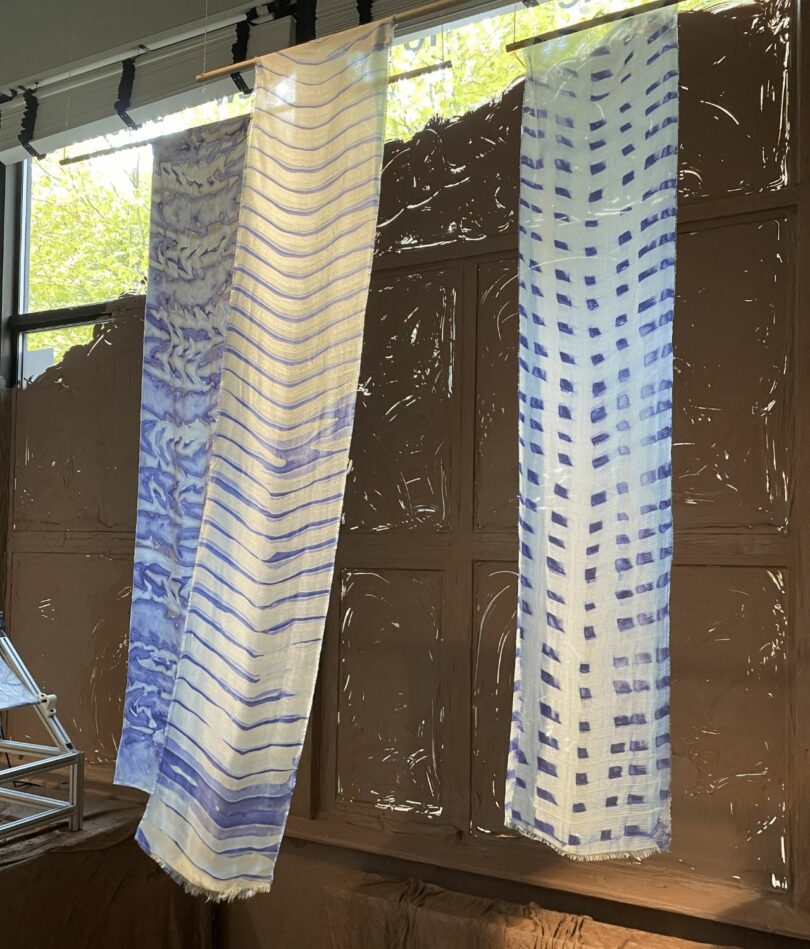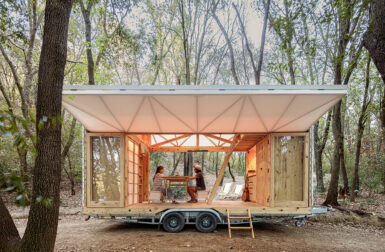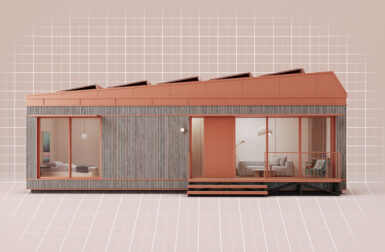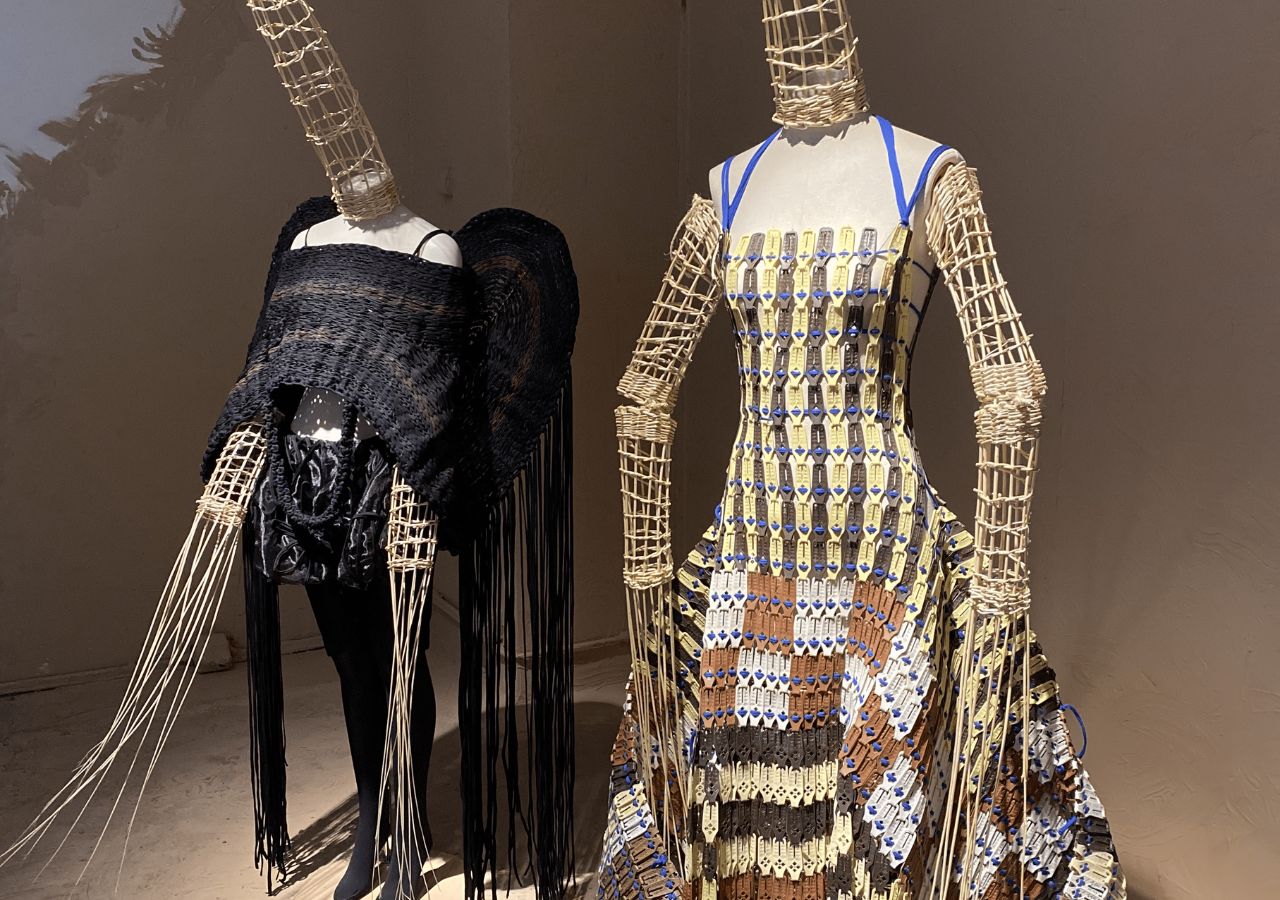
New Order of Fashion provides emerging fashion designers with a platform, material expertise, research support, and a well-equipped atelier, empowering them to accelerate a just transition to a fully circular fashion and textile industry. “We are fortifying the groundwork for a brighter future,” they say. “This entails an alternative fashion system that benefits our planet and humanity as a whole.” Their exhibition for Dutch Design Week 2023 was entitled Regeneration: Fashion From The Ground Up and explored what regeneration looks like in the fashion context through three lenses: Earth Care, People Care, and Fair Share.
Earth Care included contributions that approach the earth as a living, breathing entity and practices that promote environmental biodiversity – nurturing the living soil. The first piece, The Healing Lace, by Royal College of Art graduate Katerina Knight, is an impossibly delicate needle-lace dress made from three varieties of lavender, that she grew on her own allotment and harvested over two summers.
Katerina spent more than 250 hours hand threading each dried and preserved seed of lavender onto silk and linen. “The relationship between growing and sewing is deeply intertwined. Both are incredibly nurturing when you invest patience and time,” she says. “None of the techniques I now work with I believe to be technically demanding or highly innovative per se. But what they do demand of me is time. Perhaps an entity in today’s accelerated society we take for granted.”
Fifth-year Aalto University fashion student Ruusa Vuori trained in classical ballet and contemporary dance before an injury forced a change in direction. “Clothing can expand or reduce the experience of personal space, form a shell or invite in, open or close, draw boundaries or break them,” she says. “The work emphasizes sensory aspects and the sensitivity to embodied experience developed through my background in dancing.”
“I believe that when things are destroyed and exhausted, the vitality that bursts out of them is infinite,” says Ju Bao of his collection Annihilation. “I have always been obsessed with the washed and destroyed effects of denim. The longer the wearing time, the richer the texture will be.” He uses knitting techniques to create an illusion of worn denim, avoiding the artificial washing and destroying processes used by manufacturers, making this “ruined romance more sustainable.”
Regenerative Folklore is a collection by Spanish Andalusian designer and Central Saint Martins knitwear graduate Silvia Acién Parrilla. Using techniques she learned from her grandmother, she makes garments from pineapple and nettle-certified organic yarns, and hand dyes them with a blend of natural dyes sourced from bacteria and invasive plants in collaboration with fellow CSM graduate Xue Chen.
“With each stitch, I am not just creating a garment, but a symbol of my connection to my ancestors, my community, and the earth,” she says. “Through my collection, I aim to inspire a deeper appreciation for the natural world and the importance of preserving our heritage for future generations.”
Helsinki-based artist and designer Priss Niinikoski has a background in fashion and textiles but has shifted her focus to explore sculpture, three-dimensional textiles, and spatial design. As part of an artistic research residency, New Order of Fashion commissioned Priss to explore the potential of floral waste. “I chose to extract fibers from leftovers such as the cutting waste and unsalable cut flowers which I gathered from flower shops,” she says. “I used the outer layer of [rose] stems, which I peeled several times to reveal a translucent layer with a flexible nature for further processing. From the gathered fibers I twined by hand a thin cordage with some water to give more elasticity.”
“My idea of regeneration extends to the tangible and the non-physical,” says Jude Hinojosa. “I create menswear from a non-binary perspective. My pieces offer alternative choices in the traditional by embracing masculinity’s emotional side.” Jude uses upcycled menswear as the foundation of their collections, revamping them to offer choice, familiarity, and comfort, and embodying the “softness, beauty, and desire for expression” that is a less often seen part of masculinity. “It’s the mustard seed of change,” they say.
The next part of the exhibition was entitled People Care and explored a focus on non-material wellbeing as a route to creating systems that meet human needs and support social equity and community resilience. CSM graduate Ivan Delogu (top image) presents different aspects of womanhood in his work to showcase the diversity and complexity in women’s experiences in Sardinia – both throughout history and today. While Tales Told in Tangles (above) Icelandic designer Ása Bríet Brattaberg builds on craft skills passed down from her grandmothers to “re-weave memories from the past.” The piece in the exhibition has been woven with a zero waste weaving technique from Icelandic wool and old shirts that belonged to her late grandfather. “I can still remember him sitting by the kitchen table in the sky blue shirt,” she says. “I was making a memory tangible.”
The Fair Share portion of the exhibition explored the use of resources in ways that are equitable to both people – both present and future generations – and to the planet, using “less” as a starting point. Moving Pigment (above) is part of Charlotte Werth’s ongoing research into co-designing textile patterns with pigment-producing bacteria. “It intends to enlarge and make visible a reality that is usually hidden from sight, showing us the incredible beauty of this parallel microscopic world,” she says.
Vót’tetèsj (“back pocket of a pair of trousers”) explores Bastiaan Reijnen’s Limburgian family heritage, by combining the essence in quality of workwear and handwork with the aim of creating a new category of luxury clothing that will last for a lifetime. “Even if the final garments are imperfect or wear out, there will be a sense of pride and joy in repairing them,” he says. “These handmade qualities give life and character to the garments that can’t be reproduced.”
Usually we weave fabric and then make fabric into clothes, but Kelly Konings is pioneering “whole garment weaving” in her project Hybrid Forms of Dressing. “I’ve created 2D jacquard woven textiles that hold the possibility of being worn as 3D garments,” she says. “Draped and folded onto the body, these whole-garment woven textiles urge the viewer to rethink the interdependent relationship between a textile and a garment.”
Photography by Katie Treggiden.




